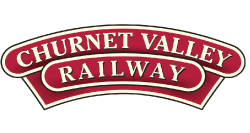You may have seen our last big update featuring some pictures and a brief write up of the relocated signalbox at Cheddleton. Gregory Wilson our General Manager takes up the story which explains the journey and planning that made this happen.
About three years ago, the idea of relocating the signalbox to its original position at Cheddleton emerged. Despite the prospect of grant funding, convincing everyone of its merits was challenging. Some even suggested having two signal boxes, but I felt that would simply look silly.
A year ago, the concept resurfaced, leading to detailed discussions with all involved. A key concern was that while relocating the box, we still needed a temporary system to manage yard entry and exit. We explored many temporary solutions, but as we know, "temporary" often turns into something long-lasting. I was determined to avoid a situation where a temporary fix lasted a decade.
This led to an in-depth conversation about the future of signalling at the railway. Having joined the railway in September 1998, it saddened me to realize that the only significant signalling project since then was Consall, overseen by our former head of S&T, Dave Varo. We have a talented S&T team, full of enthusiasm and practical skills, but we must also be realistic. It’s now 2024, and we’re still relying on technology from over a century ago. While we have plenty of visible components like signals and levers, we lack full access to the unseen parts necessary for a complete system. Success hinges on having the right components, spares, and skilled personnel to maintain everything.
This concern about longevity is crucial—not just for S&T, but for many aspects of the railway. Thus, we started thinking outside the (signal)box regarding the control of yard entry and exit at Cheddleton. A chance conversation with a member of the MPD & Operating team, who was working on a PLC-controlled gas burner project in the ‘day job’, sparked an idea: if a computer could autonomously manage a gas burner, why not use one to control the yard operations?
After many meetings, we assembled a team for this project – it was important to a get a broad range and depth of knowledge for this project. Members of the team attended several IRSE Minor Railways Section events, visiting other heritage railways and attending technical seminars. We sent members on various courses and did a lot of research into existing signalling systems on the national network.
We also took the opportunity to use the yard exit as a test bed for axle counters (a modern way of monitoring track section occupancy that has replaced track circuits in many areas on the national rail network). We approached Frauscher and they worked with us to advise, provide and install a five head, two section system. We connected the system to a test PLC and gathered data as the trains for last year’s Polar Express TM Train Ride passed over the sensors. This allowed us to learn about and gain confidence in the system. Frauscher have been very helpful and our case study has featured in one of their newsletters. When a couple of us attended Rail Live 2024 at Long Marston Rail Innovation Centre, we found our case study and the newsletter with CVR on the front displayed prominently on Frauscher’s stand!
Just before the Steam Gala in May this year, we successfully commissioned the new yard entry and exit system, allowing us to disconnect the signalbox. The team led the recovery operation within the signalbox meticulously dismantling the frame. Within 24 hours, the signalbox was just a shell!
In the background, a combination of our supporting charity The North Staffordshire Railway Company (1978) and the Moorlands Partnership Board, ensured we had the funding in place for the relocation. During lockdown, we fortuitously found a supplier on eBay, who provided us with excellent Staffordshire Blues—truly top-notch bricks!
With funding secured and an empty shell in place, members of our Motive Power Department crafted a detailed proposal for lifting the box, including designing the lifting frame. The team transformed the steel into a sturdy frame, and we hired a tubular lifting frame for the crane.
It became clear we’d need a road closure to position the crane on the crossing. We contacted our traffic management company, and after a few calls, we scheduled the road closure for Friday 27th September, from 10:00 to 16:00.
On the day of the move, we met on-site at 07:00. The crane arrived at 07:30, and by around 08:45, the box was carefully loaded onto the wagon. After double checking our measurements, it made its way down towards the station—a sight that surprised many early Friday volunteers and staff.
After a brief pause while waiting for road closure paperwork, the crane manoeuvred into position. With the frame set up, the box was lifted skyward—hopefully for the last time. A few minor adjustments later, it was securely landed on its new plinth.
